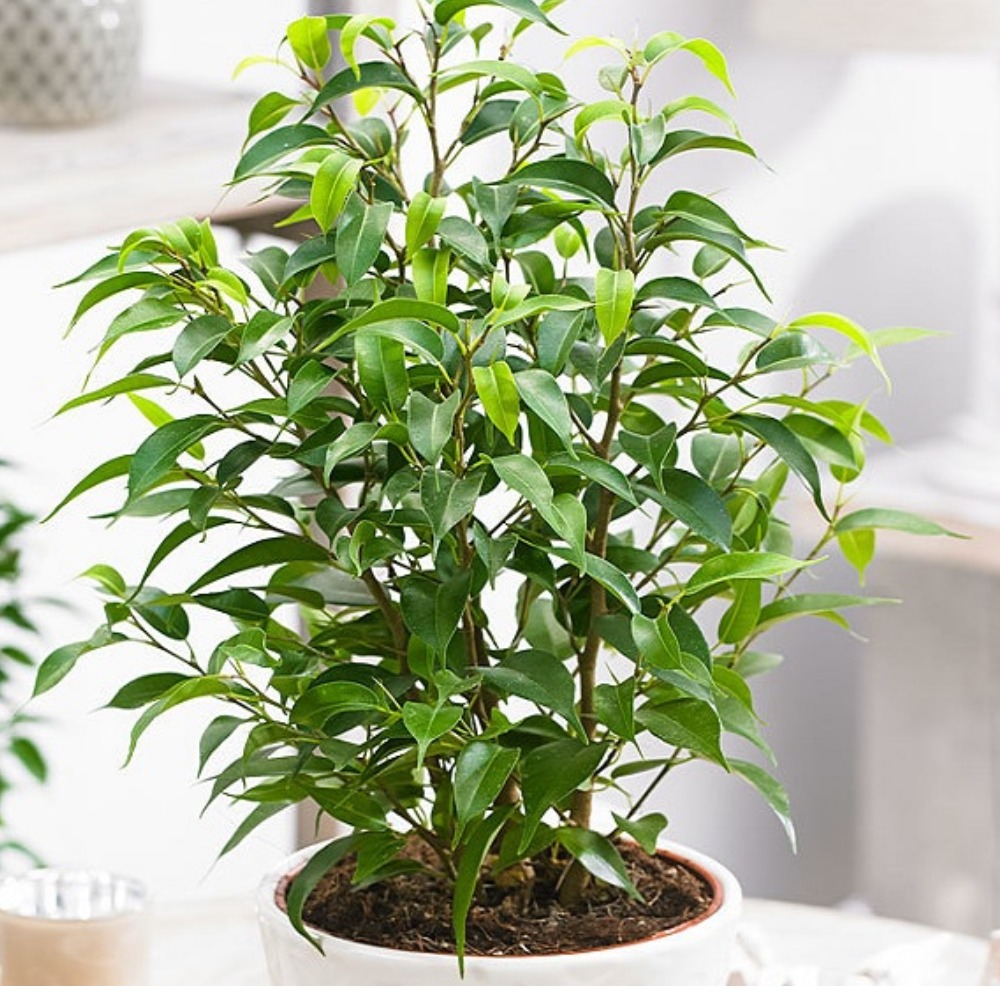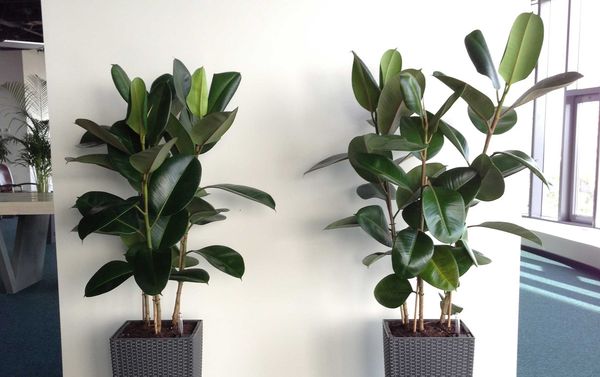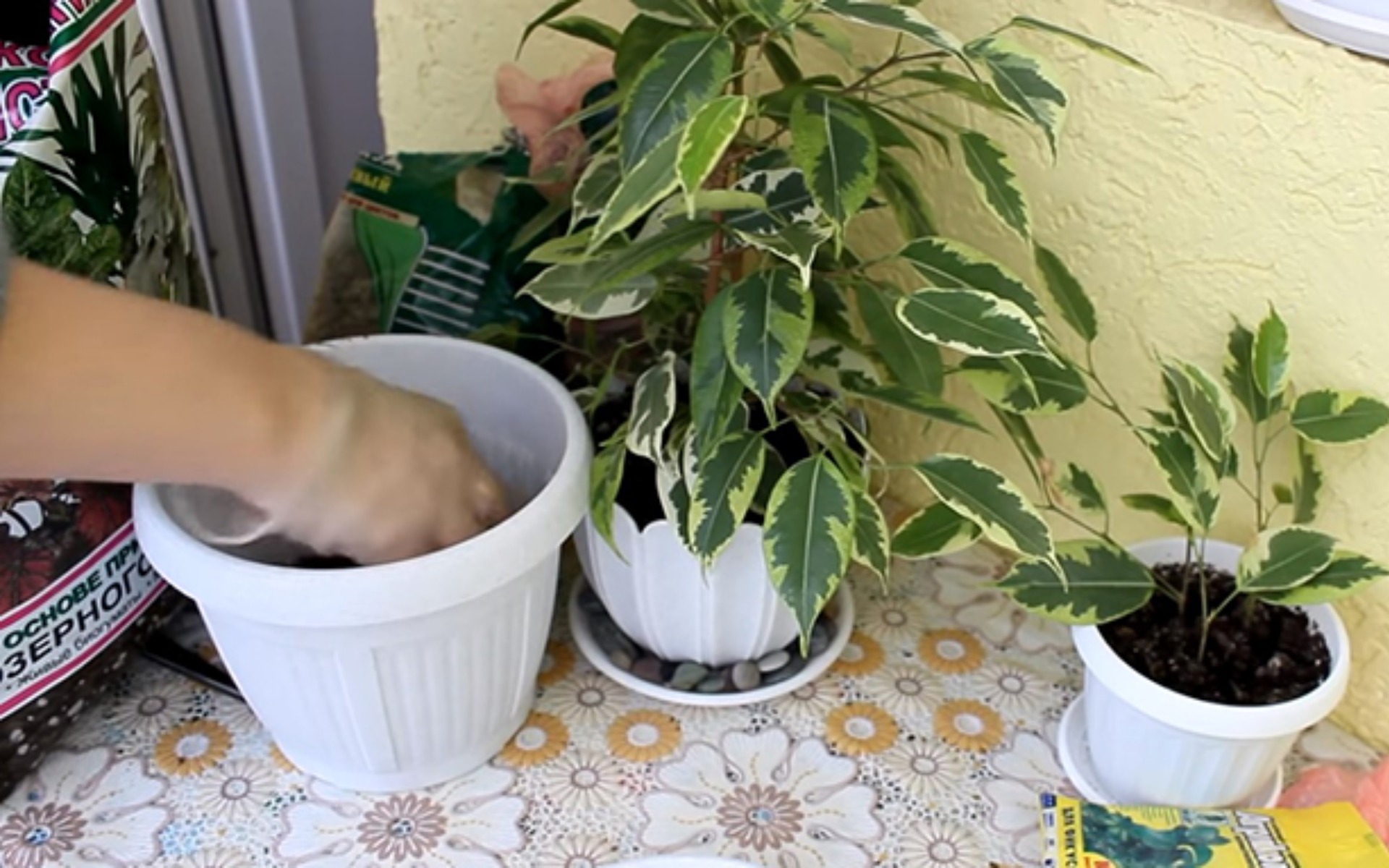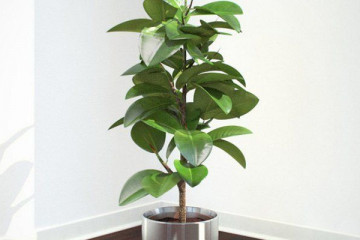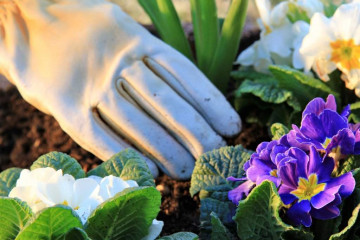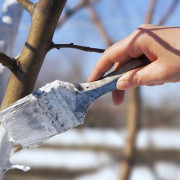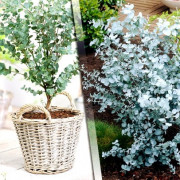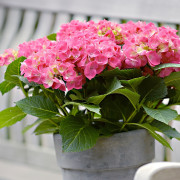Ficus Benjamin transplant at home
Content:
Ficus benjamina is grown by many indoor plant lovers at home. This is due to its decorative qualities and the ability to adapt to any conditions. But in order for the plant to have a presentable appearance, you need to provide it with proper care. Part of it is the periodic transplant of Benjamin ficus at home. The growth and development of the plant in the future depends on how correctly this procedure is carried out.
When a transplant is needed
The need for transplantation can be judged by the condition of the plant. It is necessary to carry out the procedure in such cases:
- the pot has become too small and roots have appeared above the ground or in the drainage holes;
- growth has slowed down and the size of young leaves has decreased, which indicates a depleted substrate;
- the root system of the plant is completely enveloped in an earthen lump;
- insect pests have started in the substrate;
- reproduction of seedlings;
- the soil began to sour in the pot and an unpleasant odor appeared.
How often to transplant Benjamin's ficus
Young seedlings of this houseplant should be replanted annually. This is due to the fact that they are actively developing in the nutrient substrate. And over the course of a year, the soil in the pot becomes poor and therefore needs to be replaced.
The adult ficus Benjamin does not need frequent transplantation, so it must be carried out once every 2-3 years. And to replenish nutrients in the soil between procedures, fertilizers are regularly used.
The most favorable period for transplanting is spring and early summer. At this time, biological processes in tissues are activated, which allows you to quickly recover from stress and start growing.
How to choose a pot and soil
Ficus Benjamin does not need a lot of space, since the plant develops better in a tight container. Therefore, you should pick up a new pot 3 cm wider and higher than the previous one.
You can transplant this houseplant into plastic or clay containers, as well as into wooden tubs.
Each of these options has its own characteristics:
- Plastic pots are best for small Benjamin ficus seedlings that will grow on a windowsill. This material will be able to protect plant roots from hypothermia and overheating at any time of the year. Their disadvantage is that manufacturers often use low-quality plastic, which, when interacting with moisture and soil, begins to release toxins.
- Clay pots are used for large Benjamin ficuses, which are placed on the floor. This material has a porous structure, therefore it is able to absorb excess moisture and thereby prevents root rot. The disadvantages are the increased cost and the ability to break.
- Wooden tubs are more suitable for large-sized plants that are grown in the winter garden. The material is able to protect plant roots from overheating, hypothermia and overflow.The disadvantage is that insect pests are often found in the wood and fungus develops.
You should also prepare the correct substrate for transplantation. It should allow moisture and air to flow well to the roots, and also be nutritious. The soil is purchased in a store marked "For ficus" or prepared independently. To do this, combine turf, sand, leafy soil, peat and humus in a ratio of 2: 1: 1: 1: 1. Additionally, a little perlite is added, which is a baking powder.
Ficus Benjamin is picky about the acidity of the soil. The optimum level for this plant is 5.5-6.5 pH. If the acidity is above this mark, the plant will not be able to assimilate nutrients from the soil, which will negatively affect its growth and decorativeness.
Soil disinfection
When transplanting, the substrate is processed in order to disinfect it. To do this, fry the earth in the oven and microwave for 20-30 minutes. It is recommended to spill the substrate with a saturated solution of potassium permanganate, and then dry slightly.
Preparation for transplanting ficus Benjamin
At the stage of preparation for transplantation, the plant must be watered abundantly 2 days before the procedure. This will help soften the soil. You should also slightly loosen the soil to improve breathability.
Transplant methods
Ficus transplant can be done in different ways. Which one to choose depends on the situation. It is advisable to consider each option and features of the procedure.
The simplest and most painless transplant is the transshipment method. This means that the procedure is carried out without disturbing the earthy coma on the roots. The ficus is simply rolled into a new pot, and only the voids that have formed are filled with nutritious soil. With this method, the plant receives minimal stress, quickly recovers and grows.
A complete transplant is possible. This means that during the procedure, the old soil is removed from the roots and completely replaced with a new one. This method is used when the roots begin to rot or when dangerous pests are introduced into the soil. In this case, not only the infected soil is removed, but also the affected areas of the root system.
Partial soil replacement may be another option. It is used for tall ficuses, the height of which is more than 1.5-2 m. The procedure consists in replacing the top layer of soil in the pot. To do this, carefully using a garden spatula, remove the top layer of soil without damaging the roots. After that, the formed space is filled with a new nutrient substrate and the plant is watered abundantly.
Care after plant transplant
It is important not only to transplant, but also to care for Benjamin's ficus at home after the procedure. Within 3-4 days after the procedure, the plant is shaded from the sun's rays. Therefore, the flower should be placed in partial shade until it recovers. It is recommended to create a greenhouse effect to minimize stress. To do this, put a transparent plastic bag on the crown. It is periodically removed and ventilated so that condensation does not accumulate inside.
Watering the ficus after planting is necessary as the top layer dries. During this period, it is important to control humidity, preventing overflow and drying out of the roots. Since both of these options can lead to the death of the plant.
Ficus Benjamin often sheds its leaves after transplantation, which is characteristic of this home flower. As soon as the plant adapts, new foliage will appear on it. The main thing is to provide proper care.
Transferring from the shipping pot after purchase
It is also recommended to transplant when buying a plant in a store. In this case, replace the transport substrate and the pot. This is done 2-4 weeks after purchase, so that Benjamin's ficus has time to adapt to a new place.
Transplant algorithm:
- Lay a layer of expanded clay 1.5 cm thick at the bottom of the pot.
- Sprinkle it with earth on top.
- Remove the Benjamin Ficus from the shipping container.
- Remove the soil from the roots a little.
- Place the plant in the center of the new pot without deepening the root collar.
- Sprinkle earth over the roots and fill the voids.
- Water the plant abundantly.
After the procedure, it is necessary to care for the plant in the standard mode.
Typical transplant errors
Many novice florists make mistakes when transplanting Benjamin's ficus. As a result, this leads to the death of the plant. To prevent this, you should familiarize yourself with typical situations.
Possible mistakes:
- Deepening of the root collar, which leads to decay of the shoots at the base.
- Insufficiently compacted soil, leading to the formation of voids and provoking drying out of the roots.
- Ignoring the timing of the transplant, as a result of which the plant does not have time to take root in a new pot until the dormant stage and eventually dies.
- Placing a flower on a windowsill. Direct sunlight after transplantation has a detrimental effect on the ficus.
- Feeding with a high nitrogen content, this component has a depressing effect on the roots and stimulates the fasting of shoots, which is undesirable during this period.
Observing all the recommendations, you can carry out a Benjamin ficus transplant at home without any particular difficulties. The procedure is essential for the full development of the flower.
